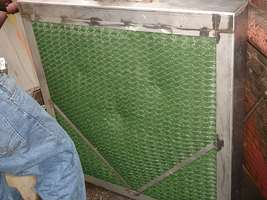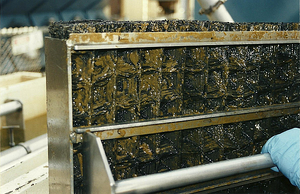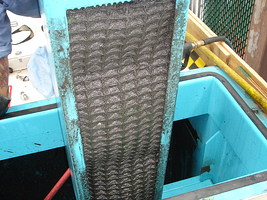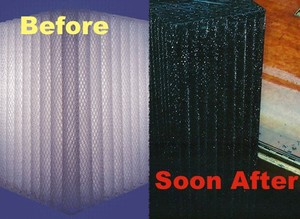
Vertical Tube Coalescers (VTC)
This Vertical Tube Coalescer (“VTC”) technology is somewhat of a hybrid between a traditional coalescer and a secondary mesh pack. This design does not utilize “stoke’s law” (or the rise rate of oil) as its primary means to remove oil from the horizontal flow of wastewater. Rather, as the oil droplets drift by the polypropylene diamond-mesh tubes they are attracted to the tubes by adsorption (very much the same principal as the secondary mesh pack).
In theory the VTC coalescer should collect droplets of oil and agglomerate them (by coalescence) into larger droplets. The larger droplets are then to break free from the polypropylene matrix and move their way to the surface along the diamond-shaped coalescer. Solids are to simply fall down and out the vertical tubes.
These tubes are heat welded together and equipped with a handle to insert and remove the media from a tank. The idea is to tightly pack the entire volume of the tank with these bundles, and remove them for cleaning when necessary.
Below: a brief exerpt from a recent keynote presentation where lead design engineer Dave Goding was asked to compare the mainstream coalescing media on the market for use in oil water separators.
In Reality
The VTC coalescer’s diamond-mesh pattern that creates a fixed coalescer matrix is too “tight”. The openings for wastewater to flow are between 1/8” to 1/4” – which is way too small for typical industrial wastewater applications. The coalescer gets easily blinded by leaves, plastic(s), and solids that are 1/8” and larger. The fixed, tight matrix does attract oil well. However, at the same time the finer solids drift through the pack, they come into contact with the oil and simply cling to the oil particles—creating an oily sludge deep within the coalescer pack.
In practice, solids do not drift down and out of the pack’s tubes. They simply get caught in the coalescer as solids get caught in any filter. Once plugged up, the packs are almost impossible to clean completely. These packs need replacement more often than most other types of coalescers, and become an ongoing and expensive replacement part.
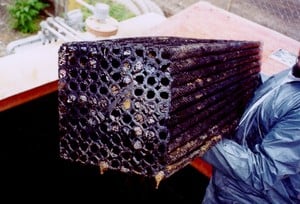
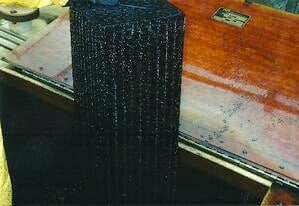
This is a disposable model, as there is no way to clean fully into the center of each bundle. Higher flow rates can have upwards of 20 of these tube packs that need to be pulled out and cleaned/replaced on a monthly basis.


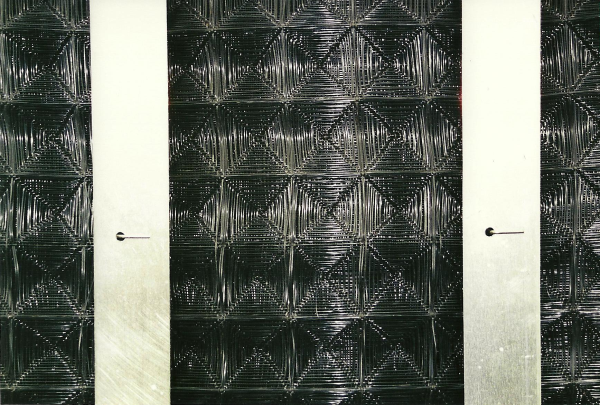-1-resized-600.jpg?width=297&height=200&name=hsa_(mesh_pak_for_400)-1-resized-600.jpg)
